Rustic, aromatic and personalized, Beer bread with sourdough is a delicious twist where you can use your favorite beer and bake great bread.
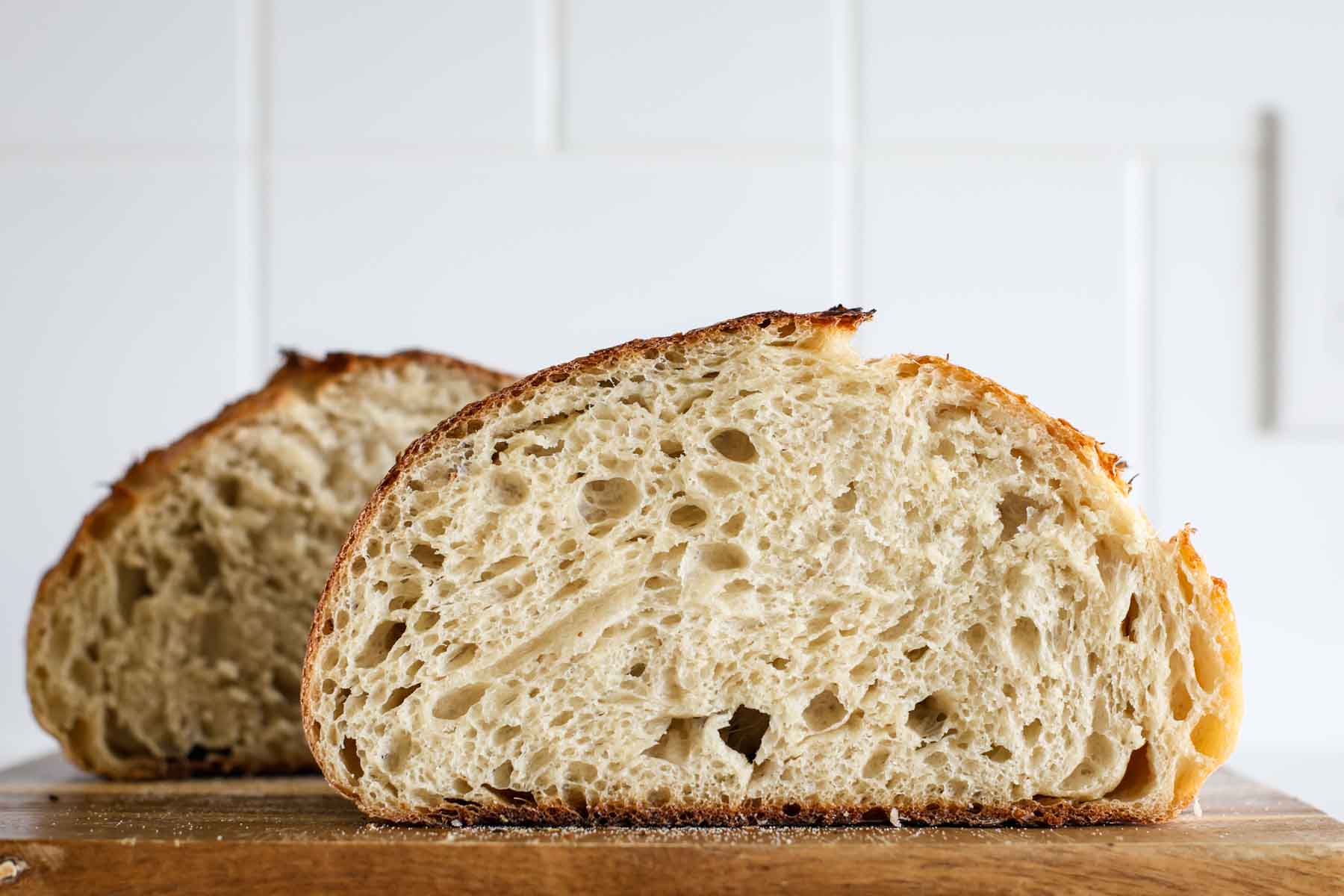
After years of baking my favorite craft beer bread, I decided to take it to the next level by going full sourdough with this recipe. This bread is easy to make – no kneading required. Just a few sets of stretching and folding, followed by a solid bulk fermentation, and you’re good to go!
ingredients
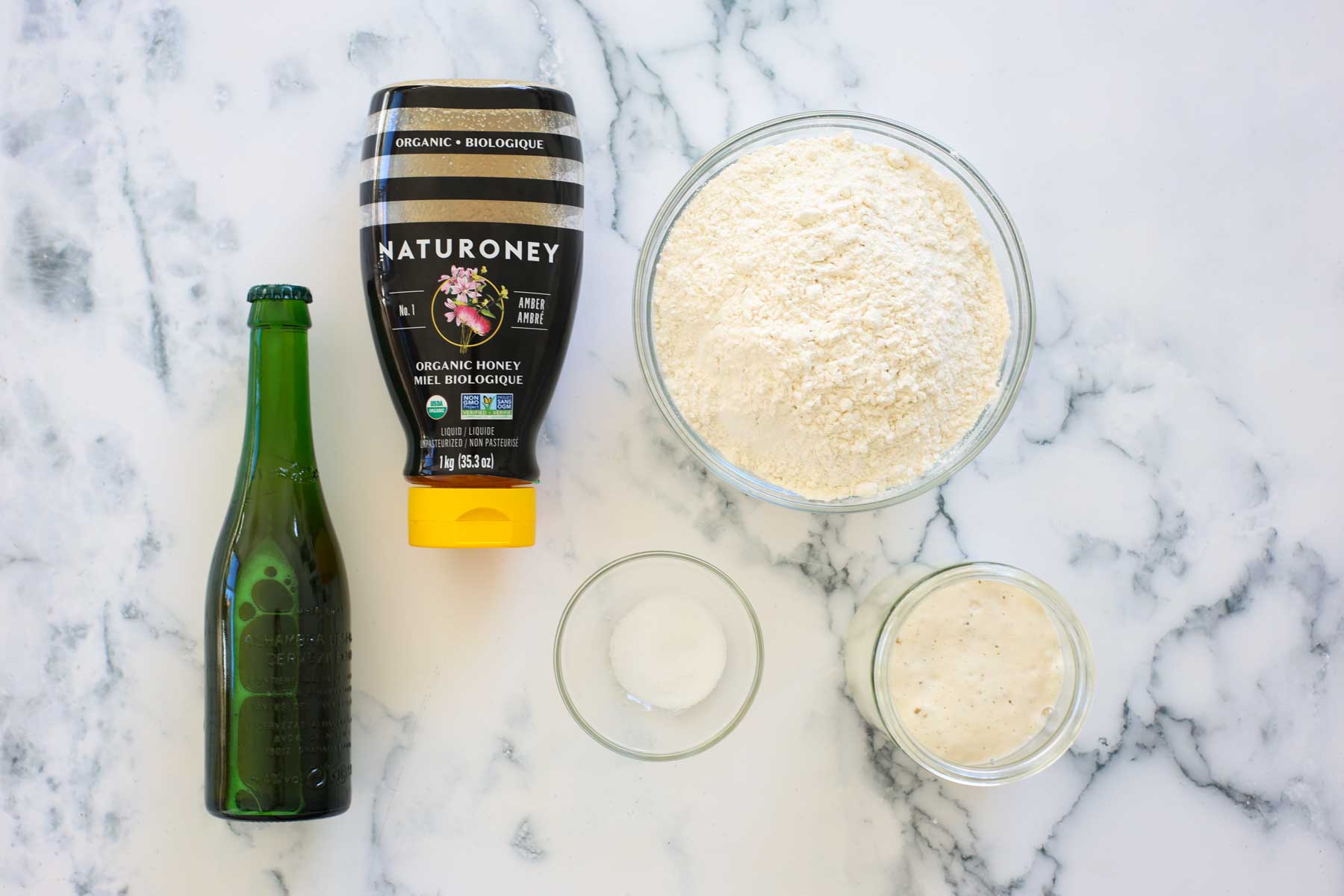
Starter for kvass: Make sure your starter is active and bubbly. We need an active starter for this recipe to work.
honey: I like to add a little sugar when I make this recipe to help the fermentation process along. If you want vegan beer bread, substitute the same amount of sugar or try this vegan recipe with honey.
Bread flour: I recommend using bread flour for this recipe to ensure a good texture. While all-purpose flour can work, bread may not have the same strength and texture.
beer: We use beer instead of water when making this bread for a unique twist. I tested this recipe with lagers, pilsners, and IPAs—lagers and pilsners create a lighter bread, while IPAs add a stronger, more pronounced beer flavor. For a rich, dark bread, try using a stout like Guinness. If you prefer just a light hint of beer, go for a light lager or pilsner.
I’ve heard people say that roasting with beer can speed up bulk fermentation, but I’ve found the opposite. If you’re not familiar with baking with beer and sourdough, keep that in mind alcohol can slow bulk fermentation. This effect, especially when combined with lower temperatures during the winter months, can extend fermentation time.
How to do it
This recipe follows the same process of basic sourdough bread, but replaces water with beer, adding depth and flavor.
You can make this bread in one day (knead the dough in the morning and bake until the evening), start after 8 p.m., let it ferment overnight and shape it in the morning for baking or choose extended 24 hours of cold fermentation and finish the prescription after 2 days.


Kneading the dough: In a large bowl, mix the beer, sourdough, salt and bread flour. Mix until a fluffy dough forms. Cover and let rest for 30 minutes.
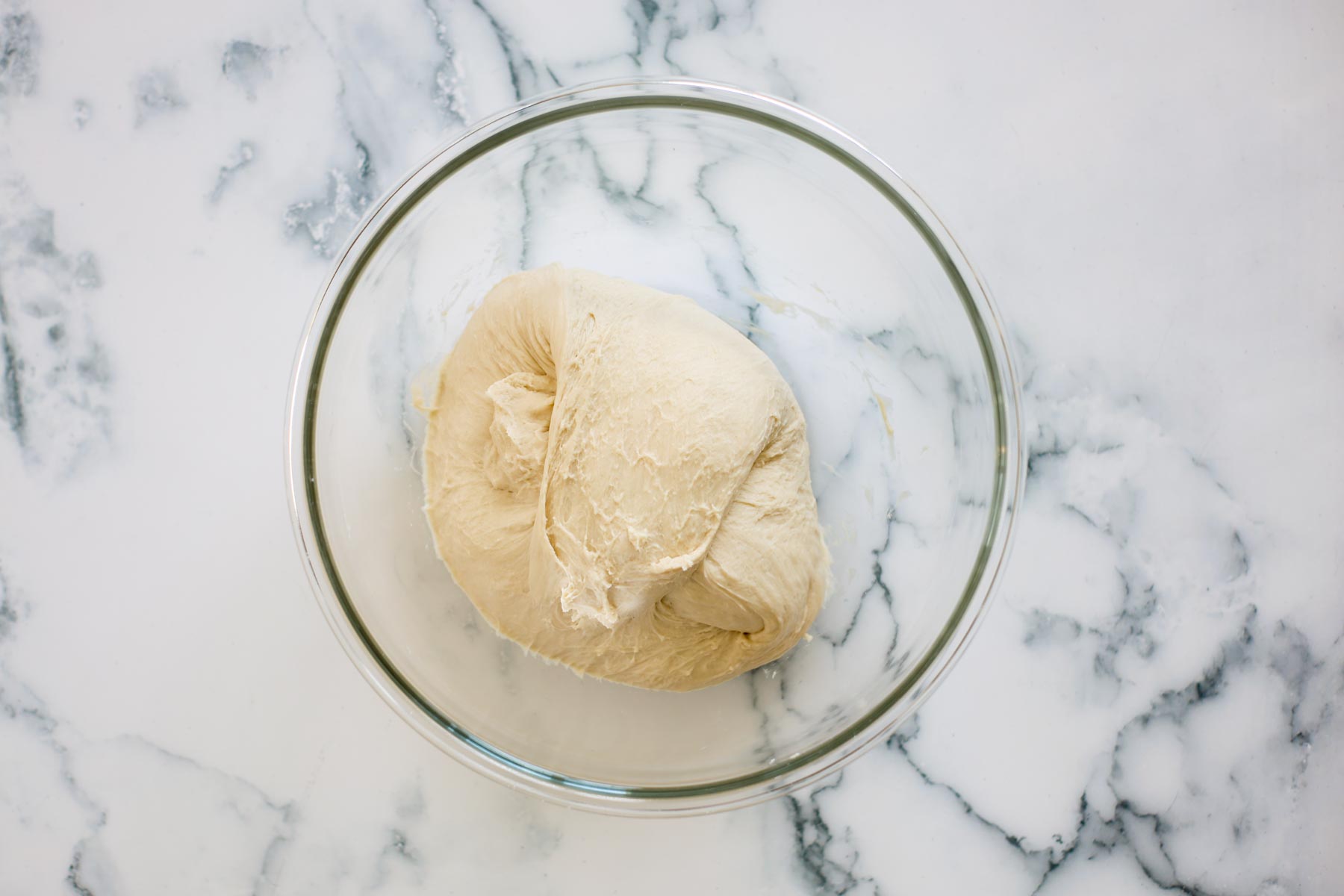

Stretching and folding: After 30 minutes, perform the first set of stretching and folding by pulling the dough up and folding it over itself, rotate the bowl and repeat until you have completed at least four folds. Cover and let rest for 30 minutes. Repeat this process 3 to 4 times, with 30-minute intervals between each set.
Advice: You can use a stand mixer with the dough hook attachment for this step. Just mix until all the ingredients are combined – less than a minute, no need to knead – and then let it rest for 30 minutes.
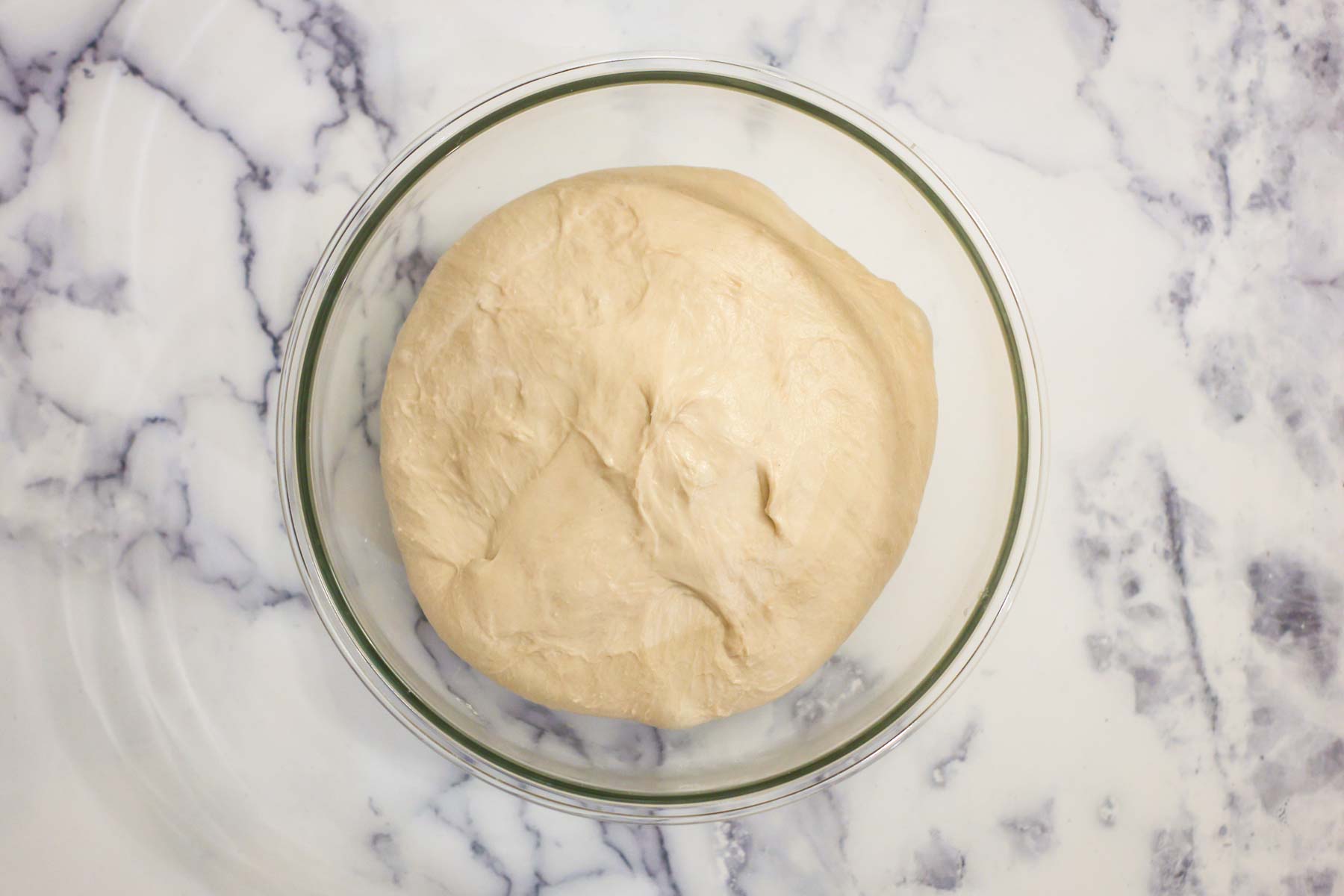

Mass fermentation: Let the dough rise until it becomes airy and increases in volume by at least 80%. If using a clear bowl, look for bubbles on the sides.
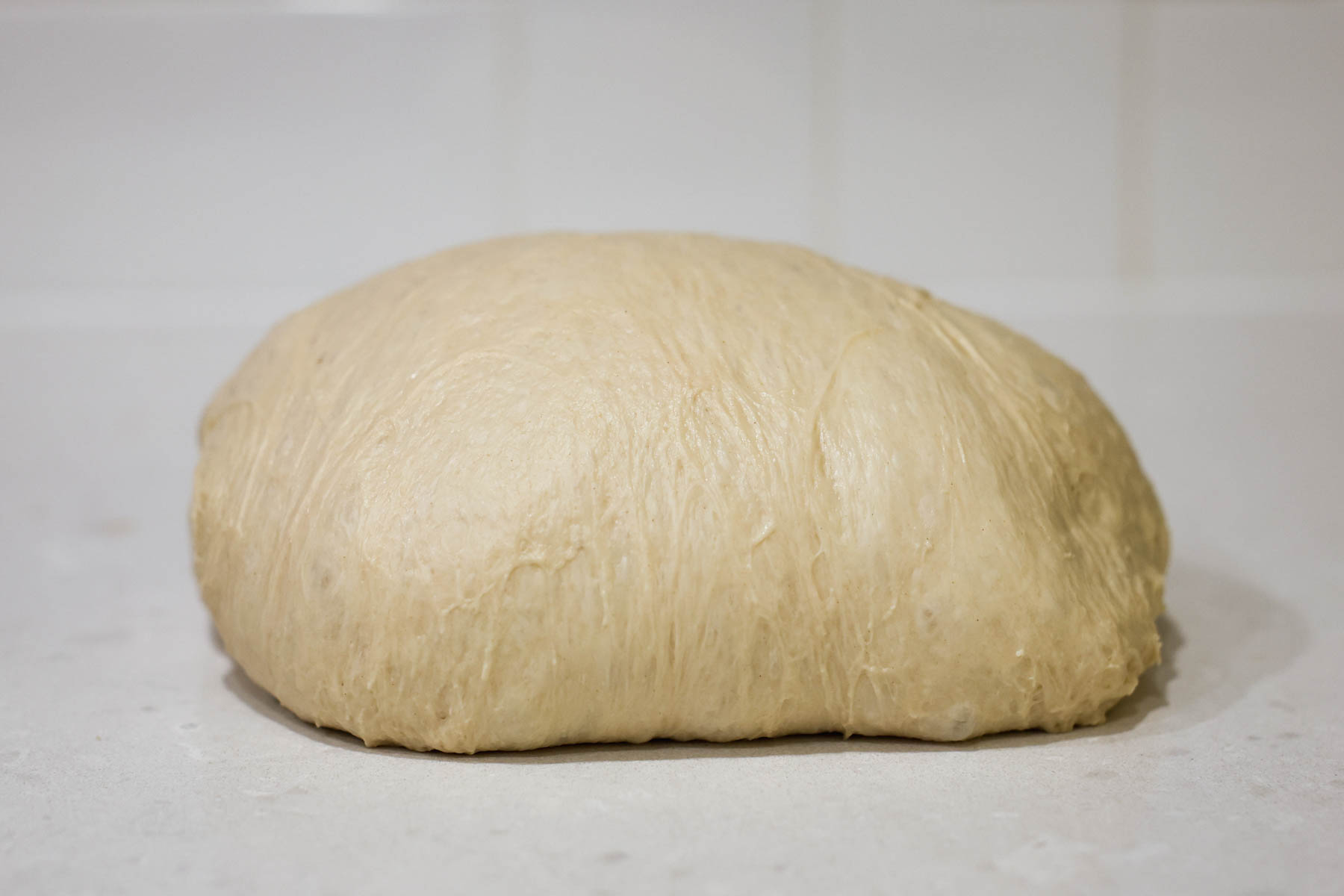

Shaping: When the fermentation is complete, shape the dough into a dough. With your hands, roll out the dough into a rectangle. Fold the left and right sides to the middle, then gently stretch the top, fold it down and seal with your fingers. Place the shaped batard, seam side up, in floured banneton for its final proofing.
A note on bulk fermentation: When making this recipe using beer as the only liquid, I found that the higher alcohol content slowed the fermentation of the mass. This was especially noticeable in the winter when it took nearly 18 hours to complete fermentation. If you’re new to sourdough and still learning the ropes of bulk fermentation, choose a beer with around 5% alcohol or less. Also, if it’s winter and your home temperature drops below 64°F (18°C) and your oven has a proofing function that stays below 95°F (35°C), you can use it to speed up the process .


Cold fermentation: I like to cold ferment this recipe for at least 8 hours for a deeper flavor. Before removing the dough from the refrigerator, preheat the oven to 450°F (232°C).
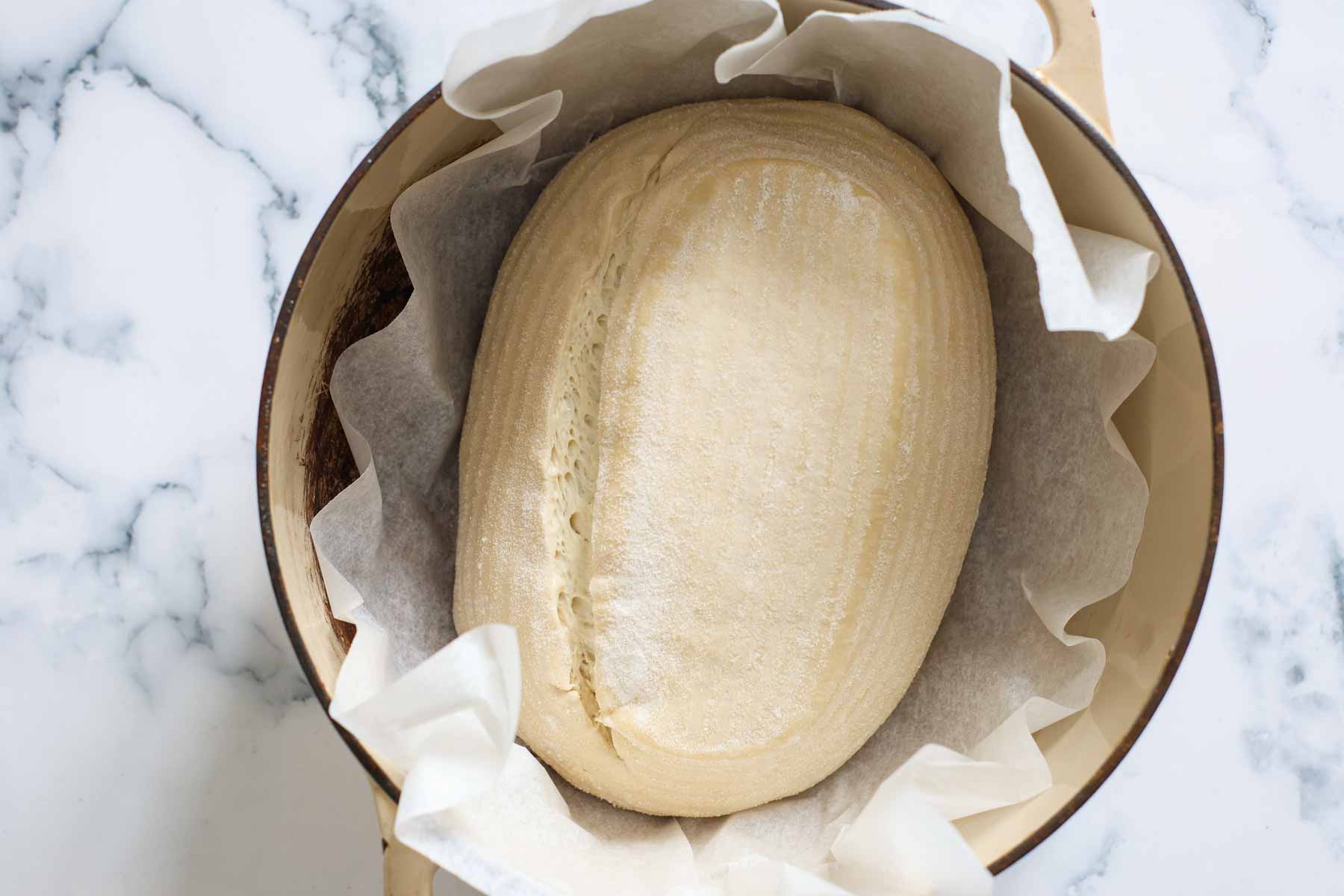

Scoring and baking: Turn the dough out onto parchment paper, cut off the top, and place in a dutch oven (no need to preheat the dutch oven). Bake covered for 30 minutes. Remove the lid, reduce the oven temperature to 425°F (218°C) and bake for another 20 to 25 minutes.
Cool the bread completely before slicing for the best texture and flavor.
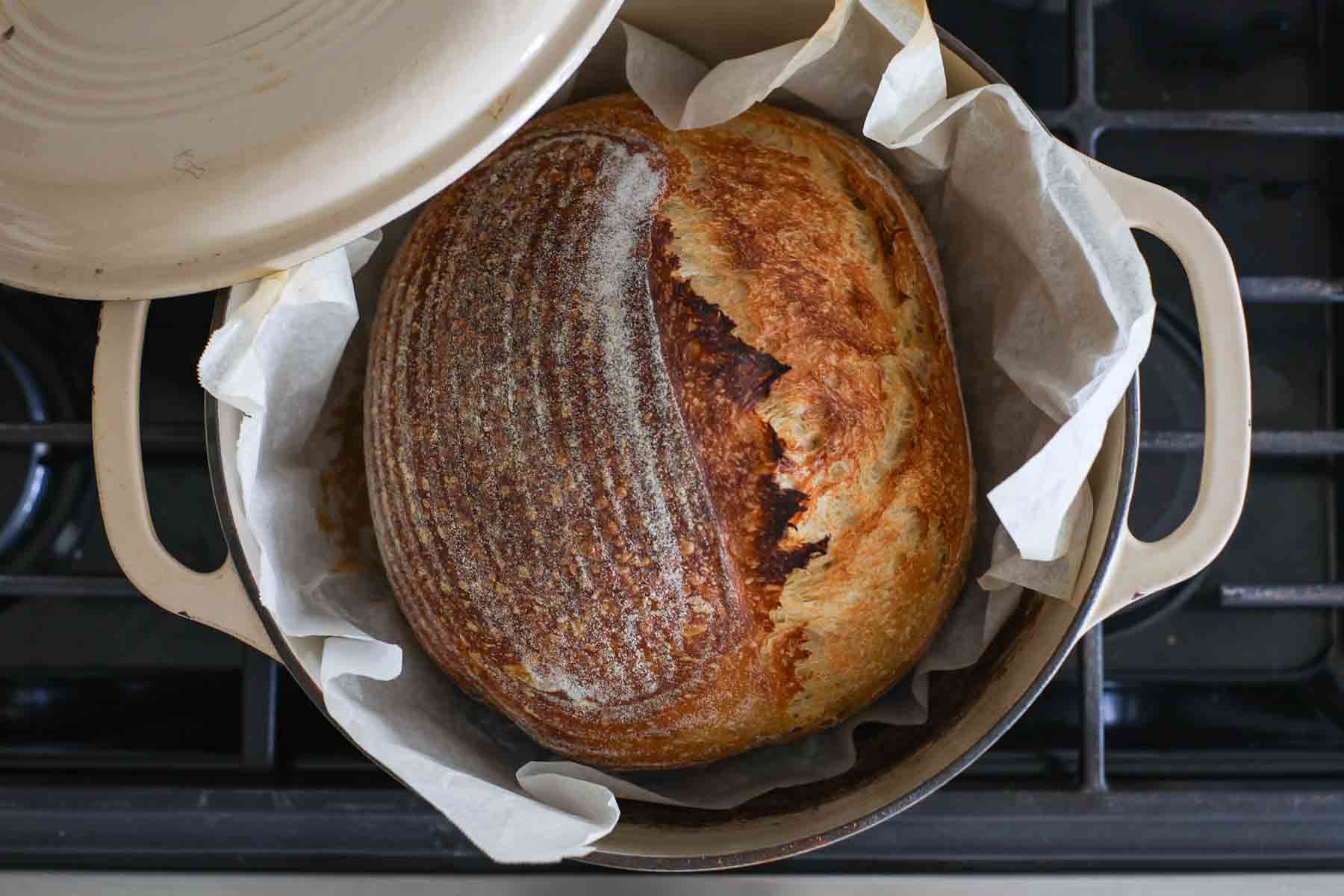

Expert advice
- Make sure your the beer is at room temperature. Using cold beer can slow down the fermentation process and, in the colder months, can even cause the yeast to go dormant.
- Non-alcoholic beer or even leftover beer can be used to create flavorful breads.
- For a tasty twist, try adding 100 grams of grated cheddar or parmesan cheese during the last set of stretches and curls. Beer bread goes great with it and makes an amazing alternative to grilled cheese!
- A 6-quart dutch oven is ideal for this recipe, but a 5-quart dutch oven will also work.
- For best results, cut the dough with a sharp blade. If you don’t have one, a very sharp knife will do. Make sure you don’t press down – let the blade slide with minimal pressure to avoid puffing the dough.
Check out the best way to store sourdough bread or my favorite ways to use up leftover sourdough bread.
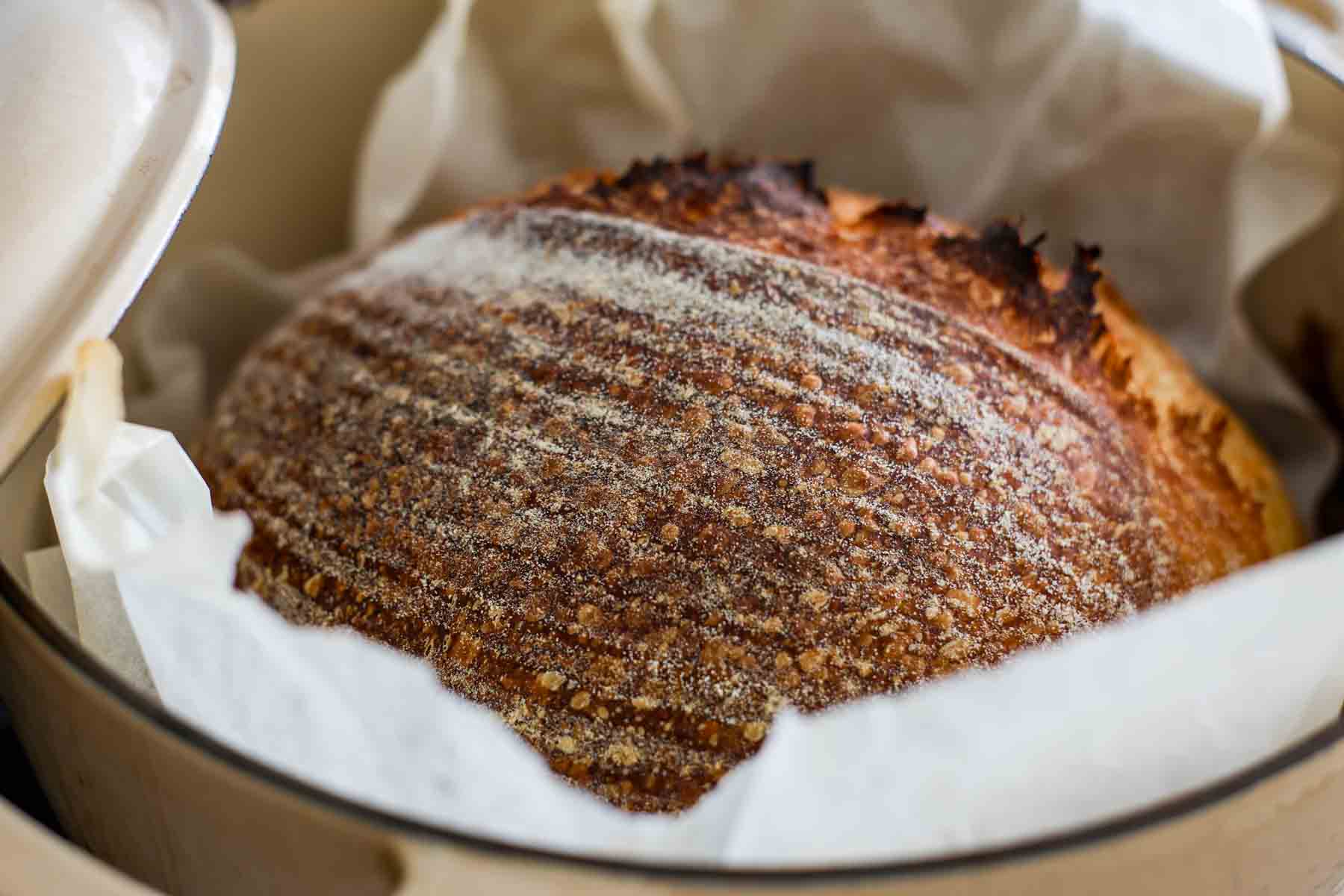

Have you tried this Beer bread with sourdough? Please leave a 🌟 star rating in the recipe card below, I’d love to know how it went!
📖 Recipe
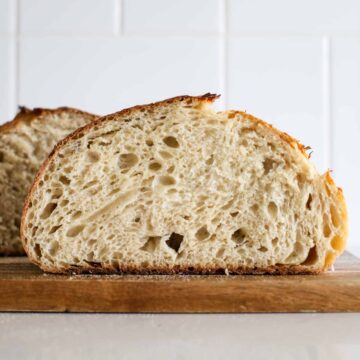

Beer bread with sourdough
Rustic, aromatic and personalized, Beer bread with sourdough is a delicious twist where you can use your favorite beer and bake great bread.
Prevent your screen from dimming
ingredients
Instructions
-
Kneading the dough: In a large bowl, mix the beer, sourdough, salt and bread flour. Mix until a fluffy dough forms. You can use a stand mixer with the dough hook attachment for this step. Just mix until all the ingredients are combined - less than a minute, no need to knead. Cover and let rest for 30 minutes.
-
Stretching and folding: After 30 minutes, perform the first set of stretching and folding by pulling the dough up and folding it over itself, rotate the bowl and repeat until you have completed at least four folds. Cover and let rest for 30 minutes. Repeat this process 3 to 4 times, with 30-minute intervals between each set.
-
Mass fermentation: Let the dough rise until it becomes airy and increases in volume by at least 80%. It can take anywhere from 6 to 15 hours, depending on the temperature, the beer and the strength of the starter. Always watch the batter, not the clock. If using a clear bowl, look for bubbles on the sides*.
-
Layout: When the fermentation is complete, shape the dough into a dough. With your hands, roll out the dough into a rectangle. Fold the left and right sides to the middle, then gently stretch the top, fold it down and seal with your fingers. Place the shaped batard, seam side up, in floured banneton for its final proofing.
-
Cold fermentation: I like to cold ferment this recipe for at least 8 hours for a deeper flavor. Before removing the dough from the refrigerator, preheat the oven to 450°F (232°C).
-
Scoring and baking: Turn the dough out onto parchment paper, cut off the top, and place in a dutch oven (no need to preheat the dutch oven). Bake covered for 30 minutes. Remove the lid, reduce the oven temperature to 425°F (218°C) and bake for another 20 to 25 minutes.
-
Cool bread completely before slicing for best texture and flavor.
Notes
About the Beers: We use beer instead of water when making this bread for a unique twist. I tested this recipe with lagers, pilsners and IPAs – lagers and pilsners create a lighter bread, while IPAs add a stronger and more pronounced beer flavor. For a rich, dark bread, try using a stout like Guinness. If you prefer just a light hint of beer, choose a light lager or pilsner. Non-alcoholic beer or even leftover beer can also be used to create flavorful breads.
A variation of cheese: For a tasty twist, try adding 100 grams of grated cheddar or parmesan cheese during the last set of stretches and curls. Beer bread goes great with it and makes an amazing alternative to grilled cheese!
Eating
Serving: 1pieceCalories: 136kcalCarbohydrates: 27gProtein: 4gfats: 1gSaturated fats: 0.1gPolyunsaturated fats: 0.2gMonounsaturated fats: 0.04gsodium: 171mgpotassium: 38mgFibers: 1gsugar: 2gVitamin A: 1IUVitamin C: 0.01mgcalcium: 6mgIron: 0.3mg

Leave a Reply